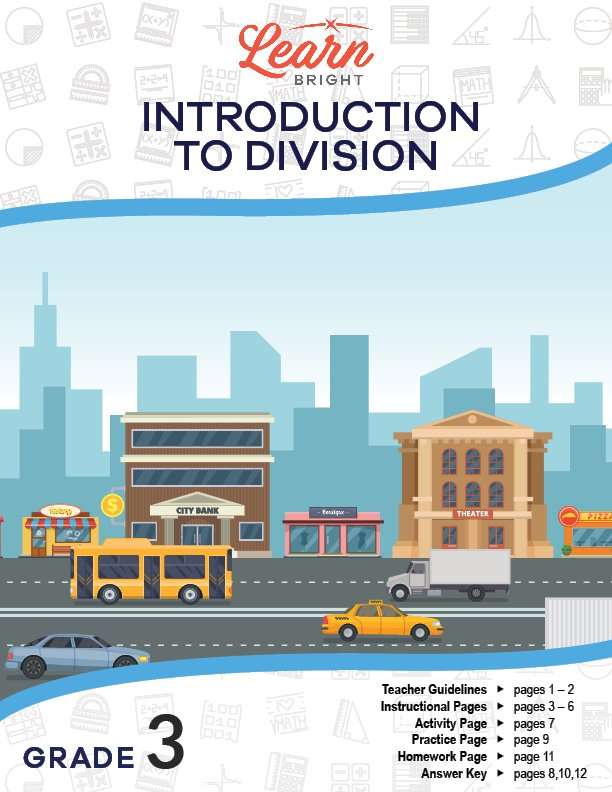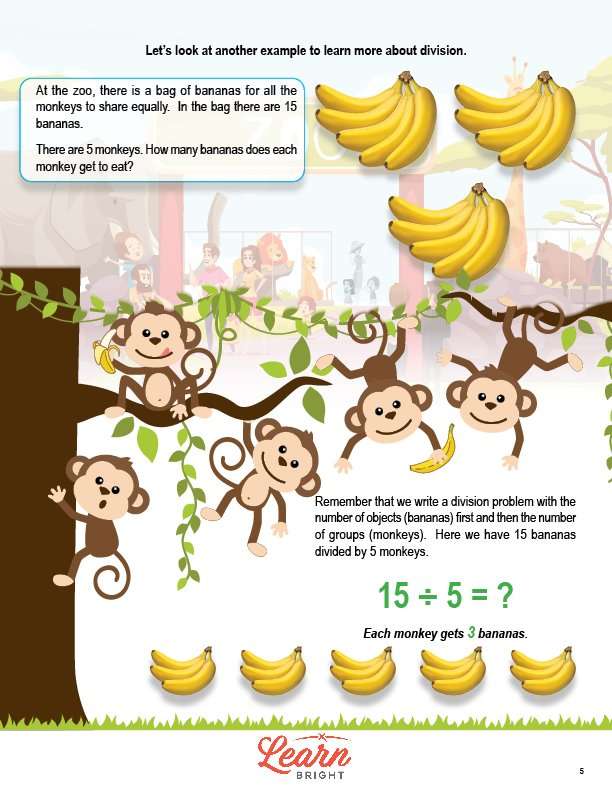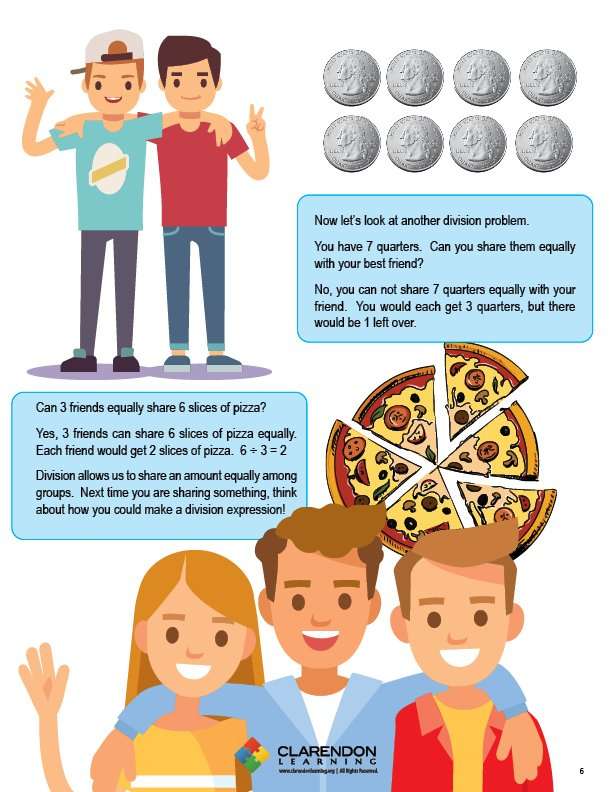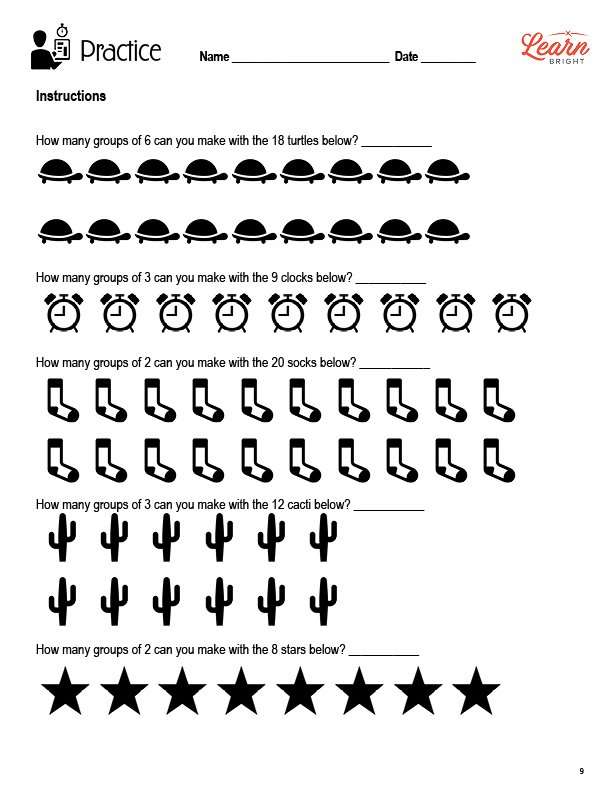Description
What our Introduction to Division lesson plan includes
Lesson Objectives and Overview: Introduction to Division teaches students the basics of division, including what it is and how it is used in mathematics in its most basic form. At the end of the lesson, students will be able to interpret whole-number quotients of whole numbers. This lesson is for students in 3rd grade.
Classroom Procedure
Every lesson plan provides you with a classroom procedure page that outlines a step-by-step guide to follow. You do not have to follow the guide exactly. The guide helps you organize the lesson and details when to hand out worksheets. It also lists information in the blue box that you might find useful. You will find the lesson objectives, state standards, and number of class sessions the lesson should take to complete in this area. In addition, it describes the supplies you will need as well as what and how you need to prepare beforehand. The supplies you will need for this lesson include scissors and glue.
Options for Lesson
Included with this lesson is an “Options for Lesson” section that lists a number of suggestions for activities to add to the lesson or substitutions for the ones already in the lesson. One optional addition to this lesson is to provide your students with small bags of objects and have them sort the objects into different groups, each time deciding if the objects have been shared equally. If you have more advanced students, you can have them begin to work without a visual representation for the problems. For extra fun, you could also bring in cookies or small candy and share equally among the students!
Teacher Notes
The teacher notes page includes a paragraph with additional guidelines and things to think about as you begin to plan your lesson. This page also includes lines that you can use to add your own notes as you’re preparing for this lesson.
INTRODUCTION TO DIVISION LESSON PLAN CONTENT PAGES
Introduction to Divison
The Introduction to Division lesson plan includes four content pages. When you divide, you’re separating objects into equal groups. First, you need to know how many objects you have total and how many groups you need them to go into. Division problems only require two symbols, the division symbol and the equal sign (=).
The lesson includes an example. Say you have 12 cupcakes that you’d like to share with 6 friends. How many cupcakes will each person get? To create a division problem, we always put the total number of objects first and then the number of groups. In this case, we have 12 cupcakes divided by 6 friends so the division problem is 12 ÷ 6 = ?. When we solve, we see that each person gets two cupcakes.
The lesson includes another example. A zoo has 15 bananas for 5 monkeys to share. How many bananas does each monkey get? Remember to write the total number of objects first and then the number of groups. We have 125cupcakes divided by 5 monkeys so the division problem is 15 ÷ 5 = ? When we solve it, we see that each monkey gets 3 bananas.
The lesson closes with two additional examples, both of which show how to create division problems. Remember to always write the total number of objects first and the number of groups second!
INTRODUCTION TO DIVISION LESSON PLAN WORKSHEETS
The Introduction to Division lesson plan includes three worksheets: an activity worksheet, a practice worksheet, and a homework assignment. You can refer to the guide on the classroom procedure page to determine when to hand out each worksheet.
CUT AND PASTE ACTIVITY WORKSHEET
The activity worksheet asks students to cut out and glue under the correct heading (“Yes! I can share equally.” or “No! I cannot share equally.”). They will also show division by placing dots in each circle.
CREATING GROUPS PRACTICE WORKSHEET
For the practice worksheet, students will create groups of specific numbers of objects. For example, they will figure out how many groups of 6 they can make with 18 turtles.
INTRODUCTION TO DIVISION HOMEWORK ASSIGNMENT
The homework assignment first asks students to look at a diagram of 12 runners and determine how many different equal groups they can make out of them. They will also answer a question about whether or not you can split a specific number equally between a specific number of people, with an explanation of their thinking.
Worksheet Answer Keys
This lesson plan includes answer keys for the activity worksheet, the practice worksheet, and the homework assignment. If you choose to administer the lesson pages to your students via PDF, you will need to save a new file that omits these pages. Otherwise, you can simply print out the applicable pages and keep these as reference for yourself when grading assignments.









